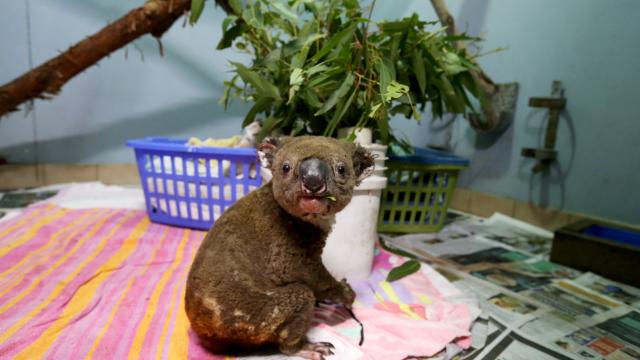Almost 3 billion animals were killed or displaced by the devastating triple earlier estimates.
That staggering figure includes 143 million mammals, 180 million birds, and 51 million frogs, and most shockingly, 2.46 billion reptiles, according to a new world-first analysis commissioned by the World Wide Fund for Nature. It’s what World Wildlife Fund Australia CEO Dermot O’Gorman called “one of the worst wildlife disasters in modern history.”
The new findings, produced by a team of 10 scientists, are preliminary with a final report due next month. But while the results are still being finalised, the authors are confident that the nearly 3 billion figure won’t change.
This is the first report to ever examine continent-wide impacts of fires on wildlife and used several methods to come to its conclusions. To estimate the number of mammals affected, the researchers reviewed previously published data. To estimate impacts on reptile populations, they created models based on a global database on reptile populations. To look at birds, they analysed over 100,000 surveys of bird counts, and for numbers on frogs, they overlaid population maps with the fires impact on streams and wetlands. For animals that escaped the raging bushfires initially, the odds of surviving weren’t especially high due to a lack of food and shelter in the aftermath.
“The interim findings are shocking. It’s hard to think of another event anywhere in the world in living memory that has killed or displaced that many animals,” Dermot O’Gorman, CEO of WWF-Australia, said in a statement.
The report offers an estimate rather than an on-the-ground census of the animals lost, though the 3 billion figure may actually be conservative because they leave out some species. Due to a dearth of relevant data, they were unable to analyse the effects on invertebrate, fish, and turtle populations. Other research has shown that the fires pushed at least 113 species closer to the edge of extinction.
“When you think about nearly 3 billion native animals being in the path of the fires it is absolutely huge, it’s a difficult number to comprehend,” Dickman said.
The 2019-20 bushfire season was catastrophic for Australia even beyond the wildlife. Fires raged across 46 million acres, an area twice the size of Portugal (of that, the new analysis looks at 11.4 million hectares). Over the course of the Australian summer from hell, Sydney was home to the most toxic air on the planet due to smoke, said smoke circled the world, and Australia’s carbon emissions doubled. Climate change played a definitive role in cranking up the heat and making fire weather more severe.
Fire seasons like the one that just passed will become more likely as the planet heats up. To prepare for what’s to come, the report calls for world leaders to identify ways to protect crucial habitats, improve fire management and prevention programming, and develop rapid response strategies to help impacted animals. Stopping carbon pollution is also a pretty good idea, too.
